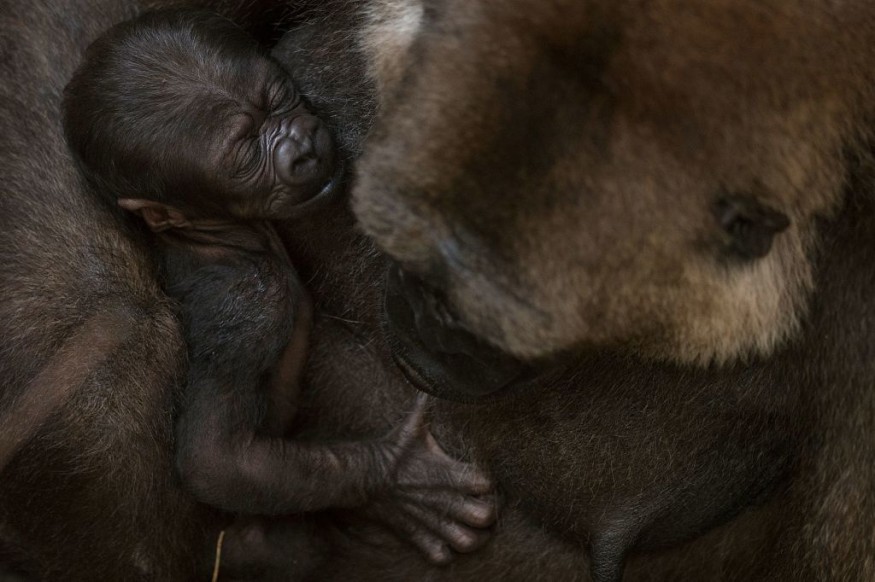
Sully, a gorilla from the Congo who spent three years living in Columbus Zoo, just gave birth unexpectedly, revealing that she is a female.
Surprise Birth in Columbus Zoo From Unexpected Mother Gorilla
When it was discovered that one of the gorillas under its care gave birth to a new baby, the Columbus Zoo experienced not one, but two surprises.
Western lowland gorilla Sully, who arrived at the zoo in 2019 with her mother, has given birth to a child of her own. According to NBC4, the zoo described the arrival of a newborn from Sully as "unexpected."
The proud mom, who was previously thought to be a male gorilla, is actually a female gorilla, which the zoo believes is a surprising twist, the zoo reported on its official social media account.
Our gorilla family recently welcomed a baby – a birth that was unexpected, yet exciting for the care team and important for the conservation of a critically endangered species. Read more: https://t.co/uVxiuVggQt. pic.twitter.com/y9PliOzvNC
— Columbus Zoo (@ColumbusZoo) July 20, 2023
Congo Gorilla Sully is a Mother
The Columbus Zoo posted pictures of Sully and her unnamed newborn child on its website. Since the baby's birth, Congo and Animal Health care staff have been keeping an eye on Sully, and they have reported that everything is going quite well. The zoo's gorilla exhibit has been closed while staff members watched the new mother, but they intend to reopen it to visitors on Friday at 11 AM.
Due to deforestation, habitat loss, and the illegal bushmeat trade, Western lowland gorillas are a critically endangered species, according to the zoo, which uses Sully's baby as an illustration of its efforts to safeguard gorillas and boost their population.
A gorilla youngster named Jamani was previously welcomed at the zoo in 2020. The zoo's newest western lowland gorilla newborn is another success in a year in which it was able to reclaim an accreditation, FOX8 reports.
The First Gorilla Baby in Columbus Zoo
According to Columbus Zoo, a newborn gorilla was born in the zoo in December 1956, making it the first zoo worldwide to successfully birth a gorilla. The zoo claims to have kept playing a crucial role in gorilla conservation for the following 67 years. The zoo hopes that by providing some extra information about this recent joyful news, it will motivate the general public to support their efforts to safeguard the future of this wonderful species.
Explaining the Gender Mix-Up
Identifying the sex of juvenile gorillas is challenging. Males and females are roughly the same size and lack obvious sex organs until around age 8. Age causes gorillas to become sexually dimorphic, which means that men and females have extremely different appearances. Males, on the other hand, don't start to grow into their typical big stature, silver backs, and big head bumps (known as sagittal crests) until they are 12 years old or older.
Sully's mother took care of her baby without problems, so the veterinarians at the zoo where she was born kept a hands-off attitude in their care. Although Sully was first thought to be a male, he was a young, healthy animal when he arrived at the Columbus Zoo and didn't require any operations involving immobilization that would have made this discovery sooner. Professional zoos only use anesthetic when it is absolutely essential for medical reasons to ensure the safety of the animals, Columbus Zoo reports.
Related Article : Japan Zoo Finds Out How Their Solitary Gibbon Got Pregnant
© 2025 NatureWorldNews.com All rights reserved. Do not reproduce without permission.





